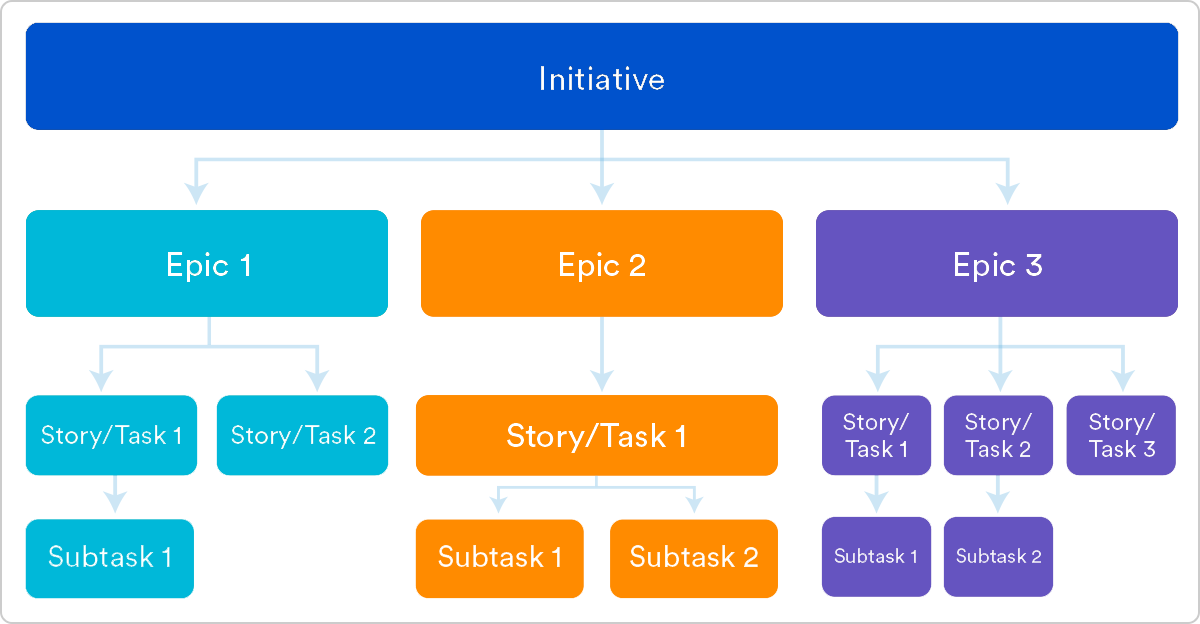Explain about Epic and User Stories.
 P K
P KStories, also called “user stories,” are short requirements or requests written from the perspective of an end user.
Epics are large bodies of work that can be broken down into a number of smaller tasks (called stories).

What is an Epic?
An Epic is a large, high-level user requirement that encapsulates a significant feature or functionality. It represents a sizable piece of work that cannot be easily completed within a single development cycle or iteration. Epics are typically defined at the beginning of a project and serve as the foundation on which the entire development effort is built.
Characteristics of an Epic
Encompassing Scope: Epics cover broad functionalities and often span across multiple user roles or system components.
User-Centric: They focus on delivering value to end-users or customers.
Long-Term Objective: Epics are usually long-term goals and may take several iterations to complete.
Independent Units: They can be broken down into smaller, manageable User Stories for development and implementation.
Strategic Importance: Epics align with the overall business and project objectives, contributing significantly to the project’s success.
What is a User Story?
A User Story, on the other hand, is a small, concise, and specific requirement that describes a singular functionality or feature from the end-user’s perspective. It serves as a bridge between the end-users and the development team, facilitating effective communication and understanding of what needs to be delivered.
Characteristics of a User Story
Independent and Testable: Each User Story is self-contained and can be independently developed and tested.
Simple Language: User Stories are written in plain language that is easy for both technical and non-technical stakeholders to comprehend.
Role-Based: They are crafted from the perspective of the end-user or customer role.
Estimable and Prioritizable: User Stories can be estimated for complexity, allowing for prioritization in the development backlog.
Negotiable: The development team has the flexibility to negotiate and adapt User Stories based on feedback and changing requirements.
How Can You Use Epics and User Stories in Agile Projects?
When you first start planning an agile development project, all the user stories are likely to be in epic form. Then, as the product owner starts prioritizing, the epics will be broken down into user stories.
Products are typically described by hundreds of requirements or user stories, which are sorted into a product backlog. Epics cannot be completed in a single sprint, so they are broken down into several user stories and then into groups of related tasks.
Epics and user stories are both well-known agile principles. Generally, they help you plan software projects more effectively by dividing the project into smaller, manageable pieces.
At a high level, an epic is a larger goal for your project that spans more than one sprint. An epic might include features like improved customer service or minimizing future customer complaints.
User stories are a part of the epic and describe specific actions that need to happen to complete the larger goal. For example, with an epic called “improve customer service,” you might have a user story called “provide live chat as an option” or “respond to emails within 24 hours.”
In agile, epics and user stories are used differently depending on whether you using them for product management or sprint planning.
When used for product management, an epic would be broken down into several user stories before being assigned to developers during sprint planning.
When used for sprint planning, epics are grouped as part of a sprint backlog so teams can work on specific items at a time.
Within the Agile paradigm, epics are crucial because they give teams a useful, shared vocabulary and method to utilize when organizing their work.
The tasks are completed in short bursts of time called sprints.
The goals within an epic are called stories and within the stories are tasks called objectives.
The epic hierarchy is a way of dividing large goals into smaller units to allow for rapid iterative revisions.
The development backlog can have many future epics identified and prioritized and, just in time, we break them down only when we’re nearing the time that we’re getting ready to deliver them.
Agile epics break your stories down into more manageable chunks, collecting those tasks and splitting the workload into a more realistic flow.
USER STORY:
A user story is the smallest unit of work in an Agile, a short, informal explanation of a software feature, written from the perspective of the end user.
User stories describe the why and the what behind the day-to-day work of development team members.
A good structure helps the Agile team to have a common understanding.
User stories put the voice of the customer at the centre and keep every member of the team focused on their needs. It outlines the desired outcome of a task.
Epic vs Story
| Parameter | Epic | User Story |
| Definition | It is a piece of work that’s broken down into specific tasks based on the needs of customers or end-users. | User story is a piece of functionality from the perspective of an end-user, which developers use to build the software. |
| Scope | Its scope is along multiple sprints | Its scope is within a given iteration/sprint |
| Duration | It is long term | It is short term. |
| Relation | It provides foundation to user stories | It is a subset of epics. |
| Target | It represents a part of work for achieving the task | It represents a specific and manageable task. |
| Granularity | It is less detailed | It is more detailed |
| Span | Epics span multiple functionalities or modules within a software system. | User Story is small and focused for a particular feature. |
| Format | Epics are typically written in a brief, high-level format and can be used for building user stories | User Story is typically written in a specific format addressing what features need to be developed in each sprints. |
| Dependency | Epics can be prioritized based on business value or strategic importance. | It is independent, meaning they can be implemented and tested in isolation. |
| Management | The product backlog is used to manage epics, which are ranked according to their total commercial value. | User stories are a component of the sprint backlog, prioritized for the next sprint. |
Epics and user stories are widely used in agile lifecycle. A product manager needs to balance the epics and user stories throughout the product development.
Subscribe to my newsletter
Read articles from P K directly inside your inbox. Subscribe to the newsletter, and don't miss out.
Written by
